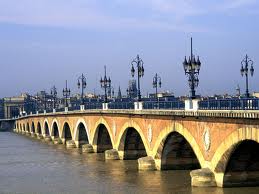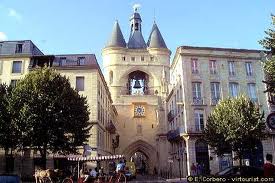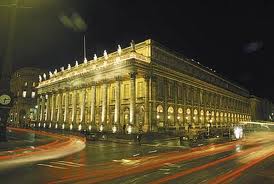 Part of the enchantment of the city of Bordeaux is its fascinating history. In addition to its excellent location on the Garonne River at the mouth of the Gironde estuary, its turbulent but compelling past may be summed up in three stages:
Part of the enchantment of the city of Bordeaux is its fascinating history. In addition to its excellent location on the Garonne River at the mouth of the Gironde estuary, its turbulent but compelling past may be summed up in three stages:
- Known as Burdigala in Roman times, the city owed its fortune to the creation of the first vineyard along the Atlantic coast during the first century. This gallo-roman city called “little Rome” cultivated an Antique civilization which lasted until the invasion of the Francs and the Normans, beginning in the third century, when the city fell into a period of obscurity.

- During the Middle Ages, the long-lasting political union between the duchy of Aquitaine and the British Royalty (1154-1443) brought about great prosperity due to the export of Bordeaux wines to the British Iles. By the 14th century the city’s population had grown to nearly thirty thousand, very high for a medieval town.
- The third period of Bordeaux’s prosperity came during the 18th century, again due to its thriving wine culture, especially in the Médoc region. By this time Bordeaux had become annexed to France and was an important port for colonial commerce, trading sugar, coffee and slaves from the West Indies. With its aristocratic parliament and its intellectual elite (including Montesquieu), the 18th century is known as Bordeaux’s “golden age.” French author Victor Hugo found the town so beautiful he once claimed, “Take Versailles, add Antwerp, and you have Bordeaux”. In 1856, Baron Haussmann, a long-time prefect of Bordeaux, used Bordeaux’s 18th century big-scale rebuilding as a model when asked by Emperor Napoleon III to modernize a then still medieval Paris. Visitors can see evidence of Bordeaux’s classical architecture in such splendeurs as the Place Royale, the buildings along the quays, and the Grand-Theatre.

Take a guided tour and see how Bordeaux’s glorious past is reflected in the modern city of today. Bonne visite!
Leave a Reply